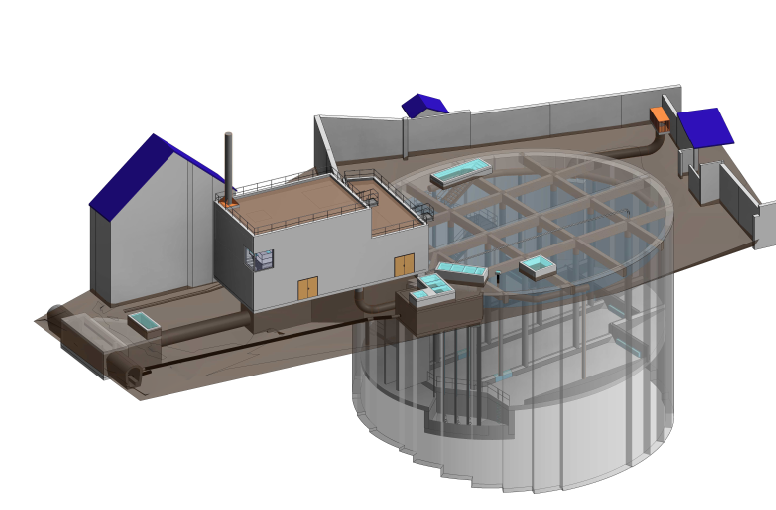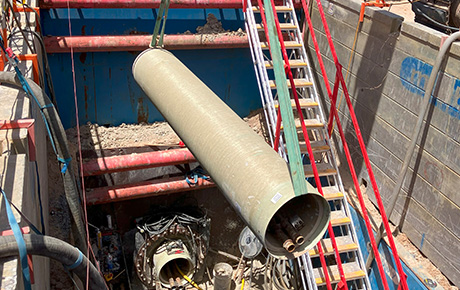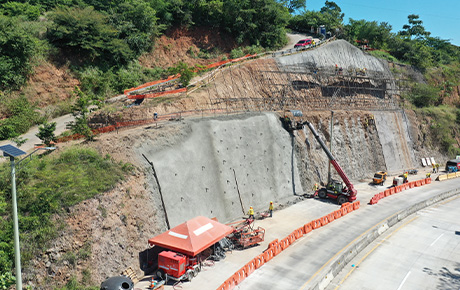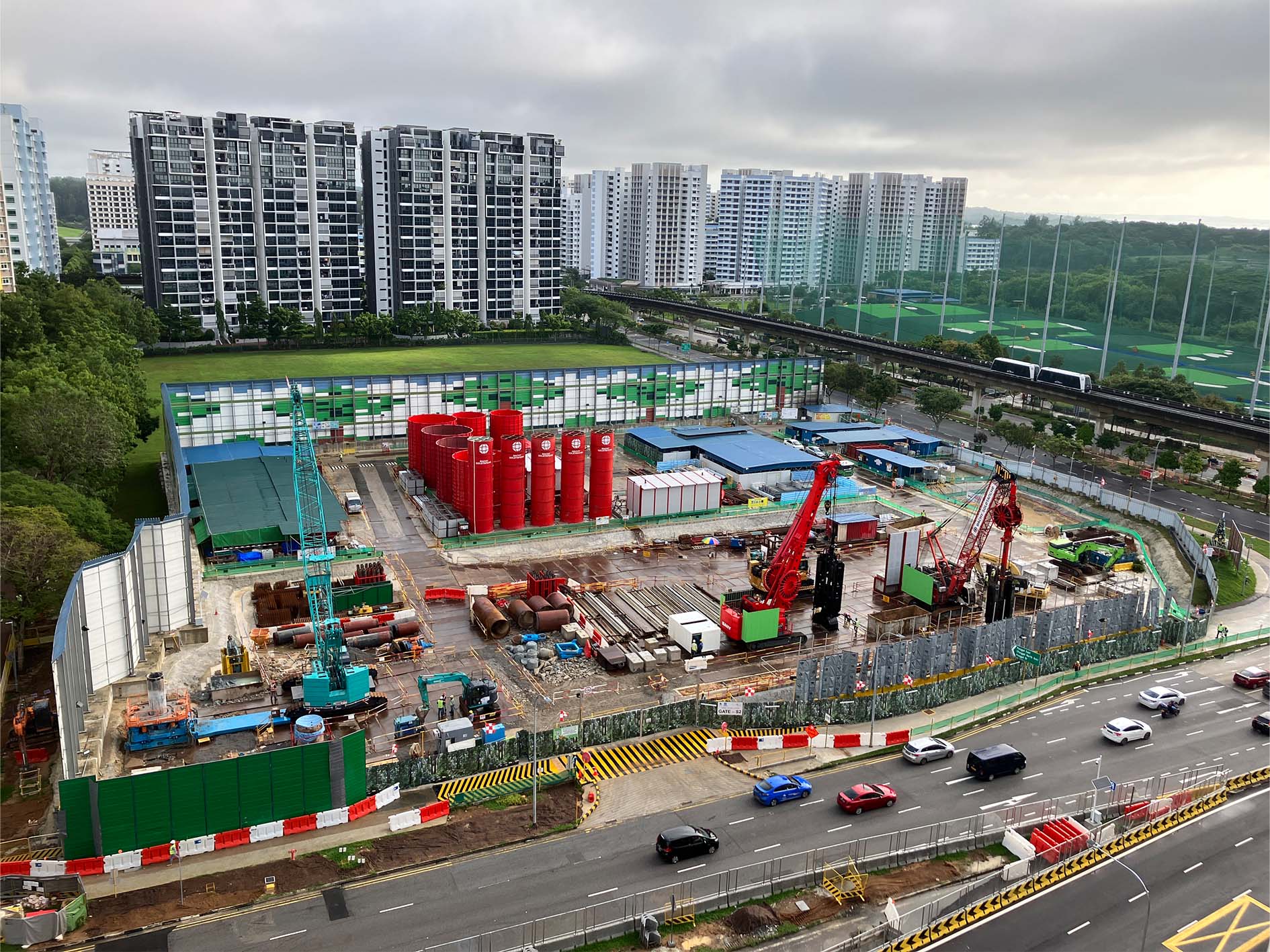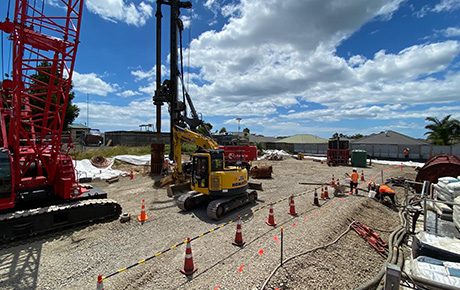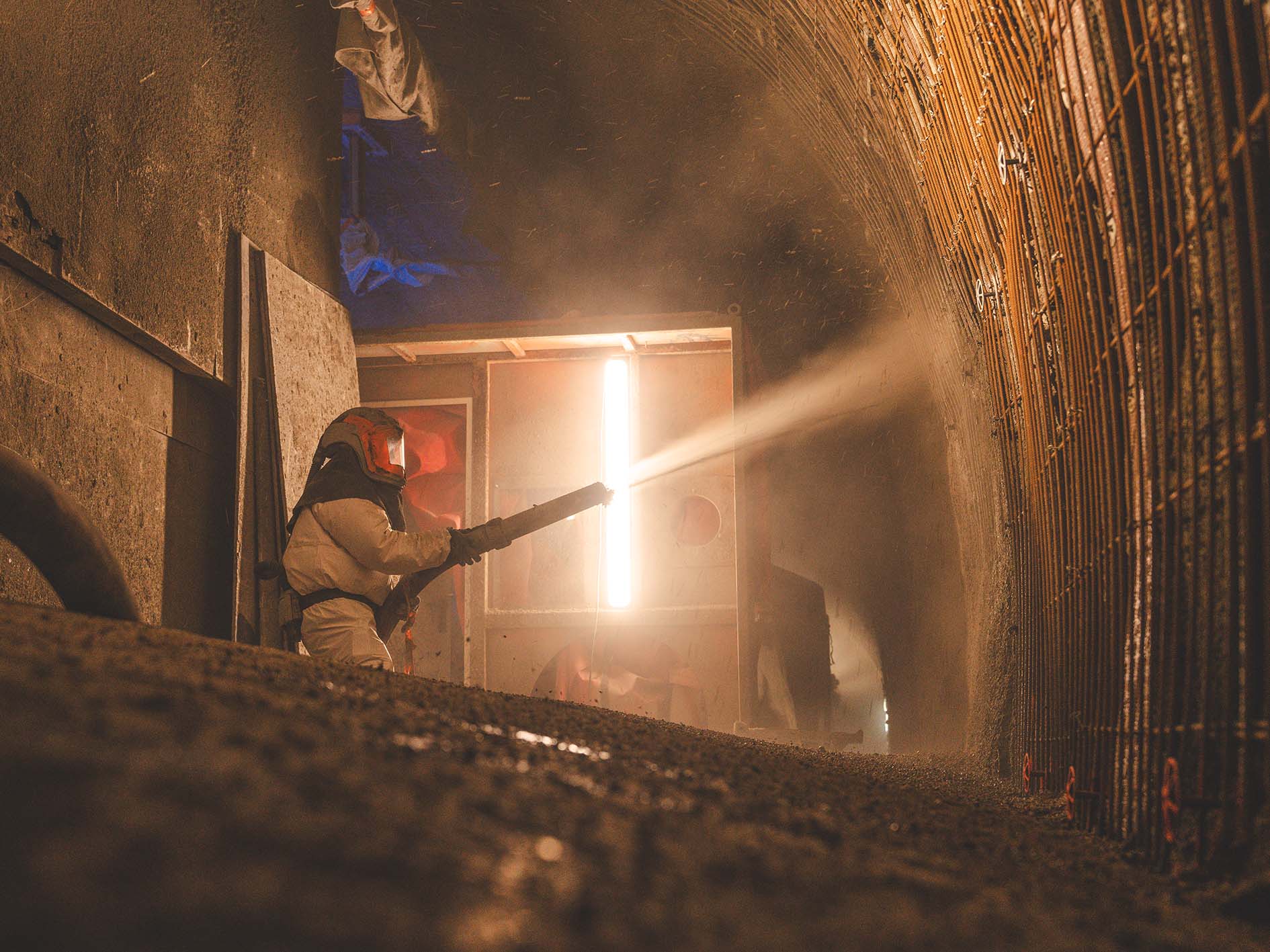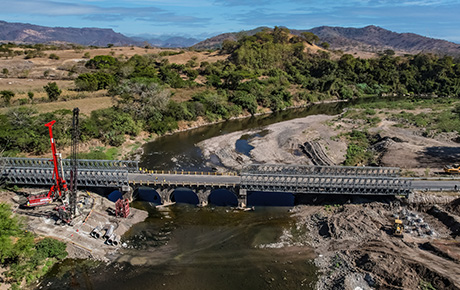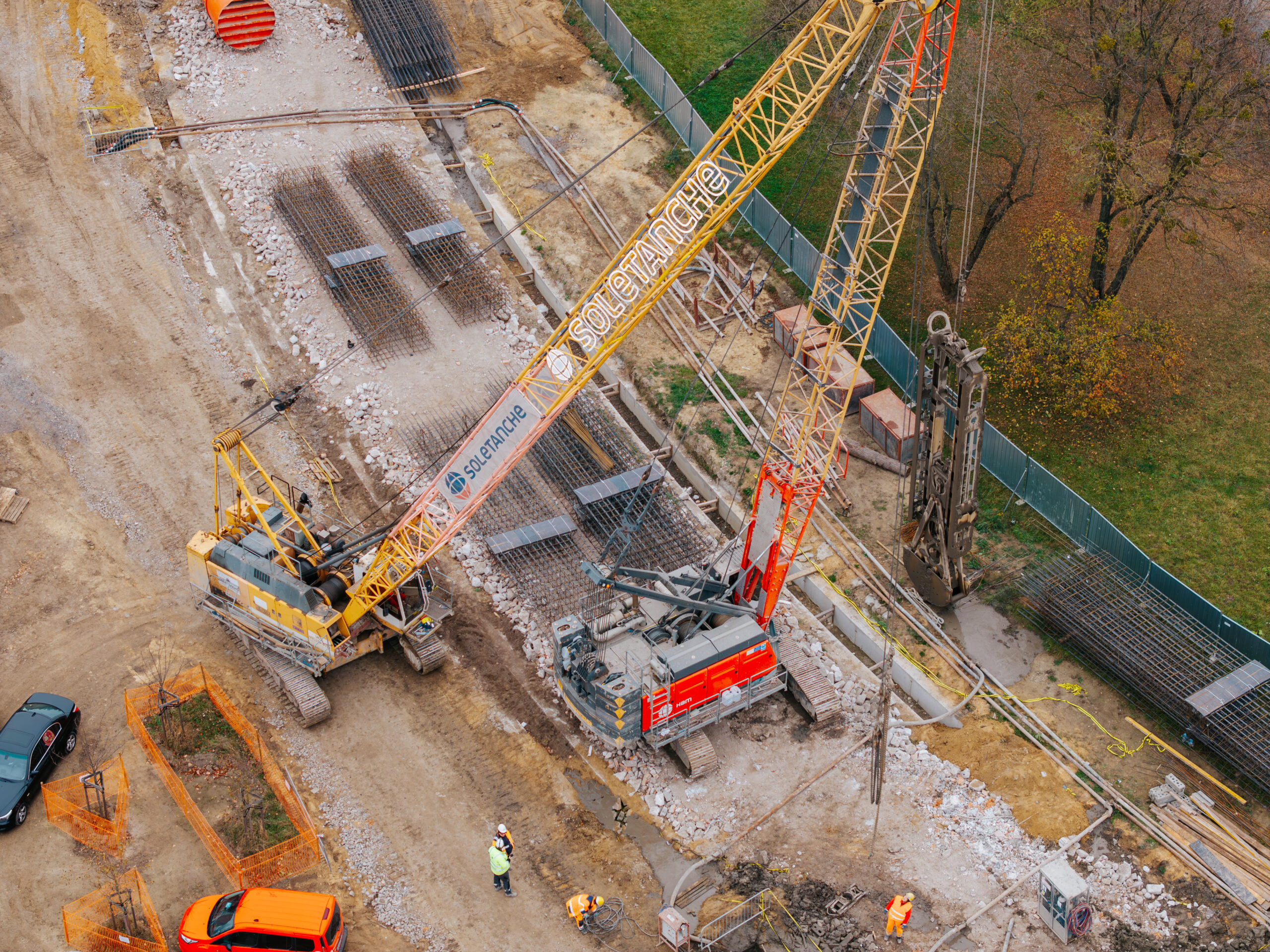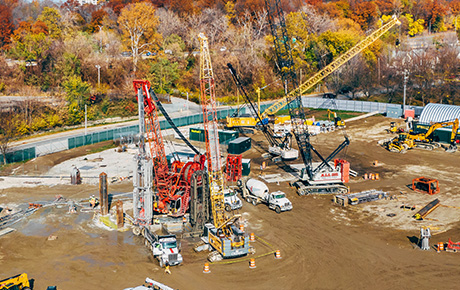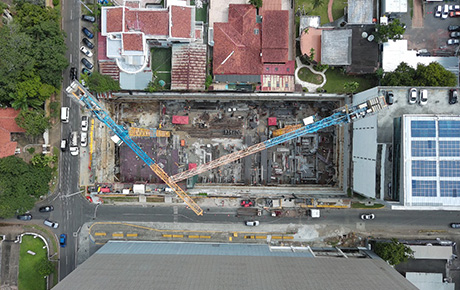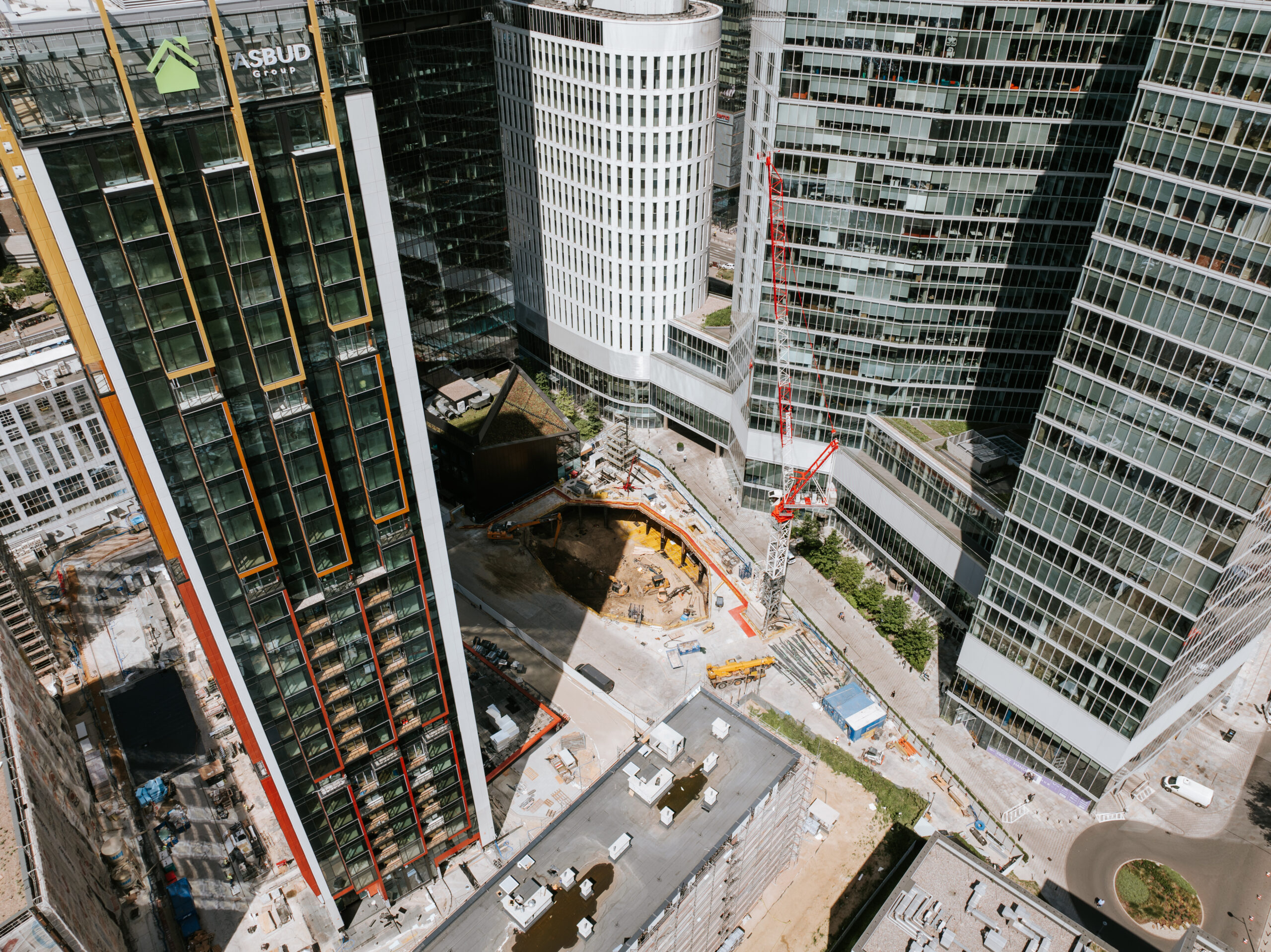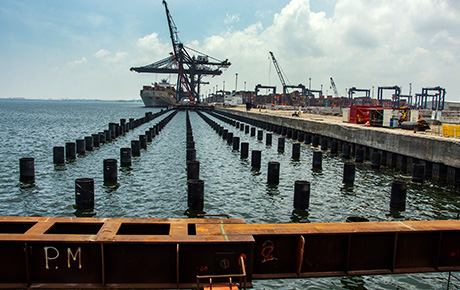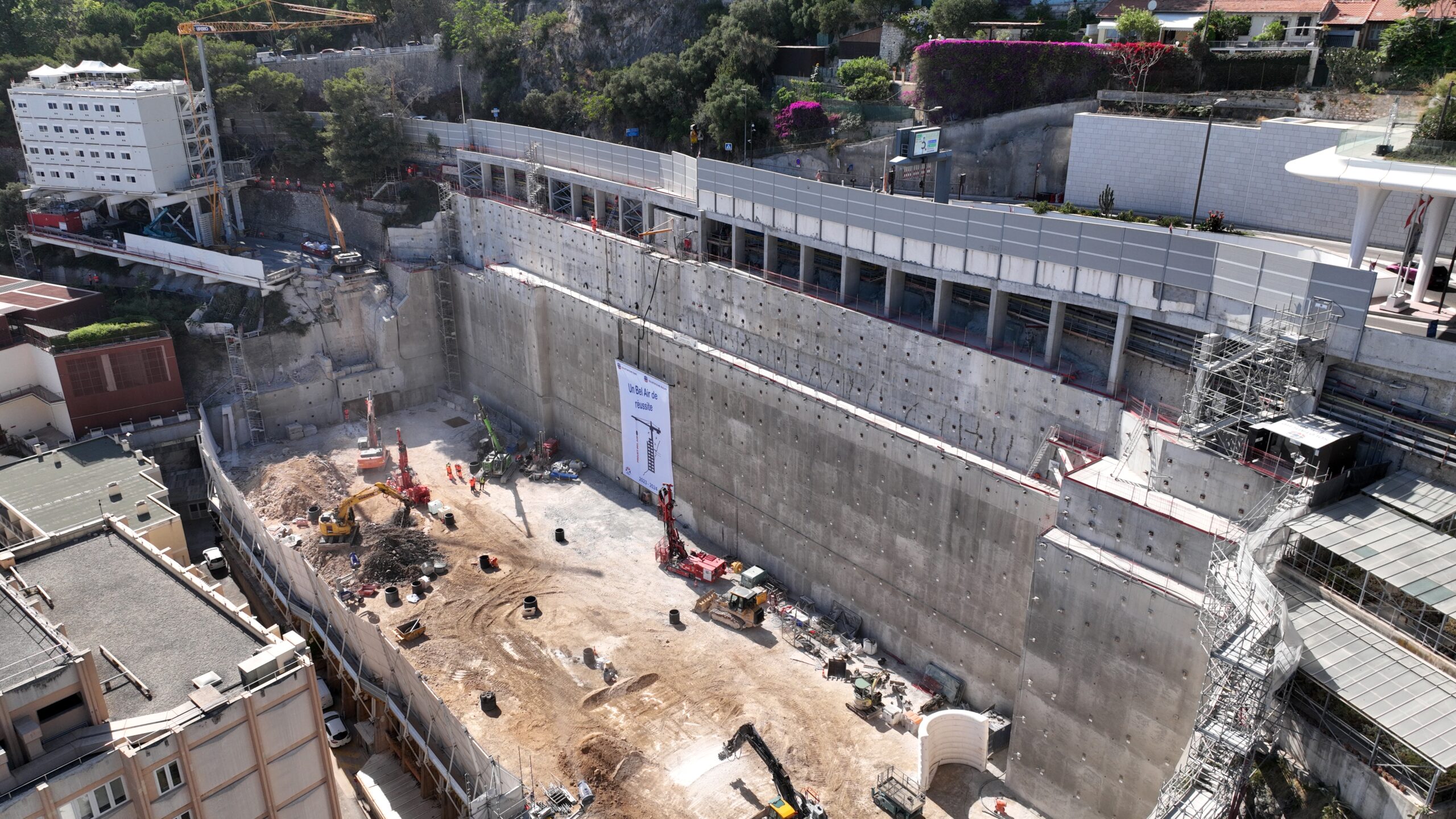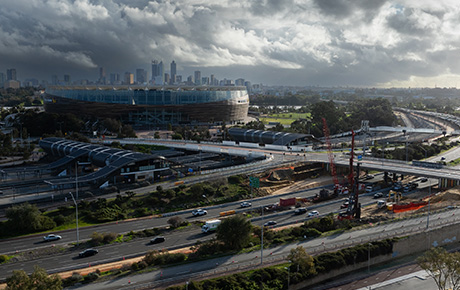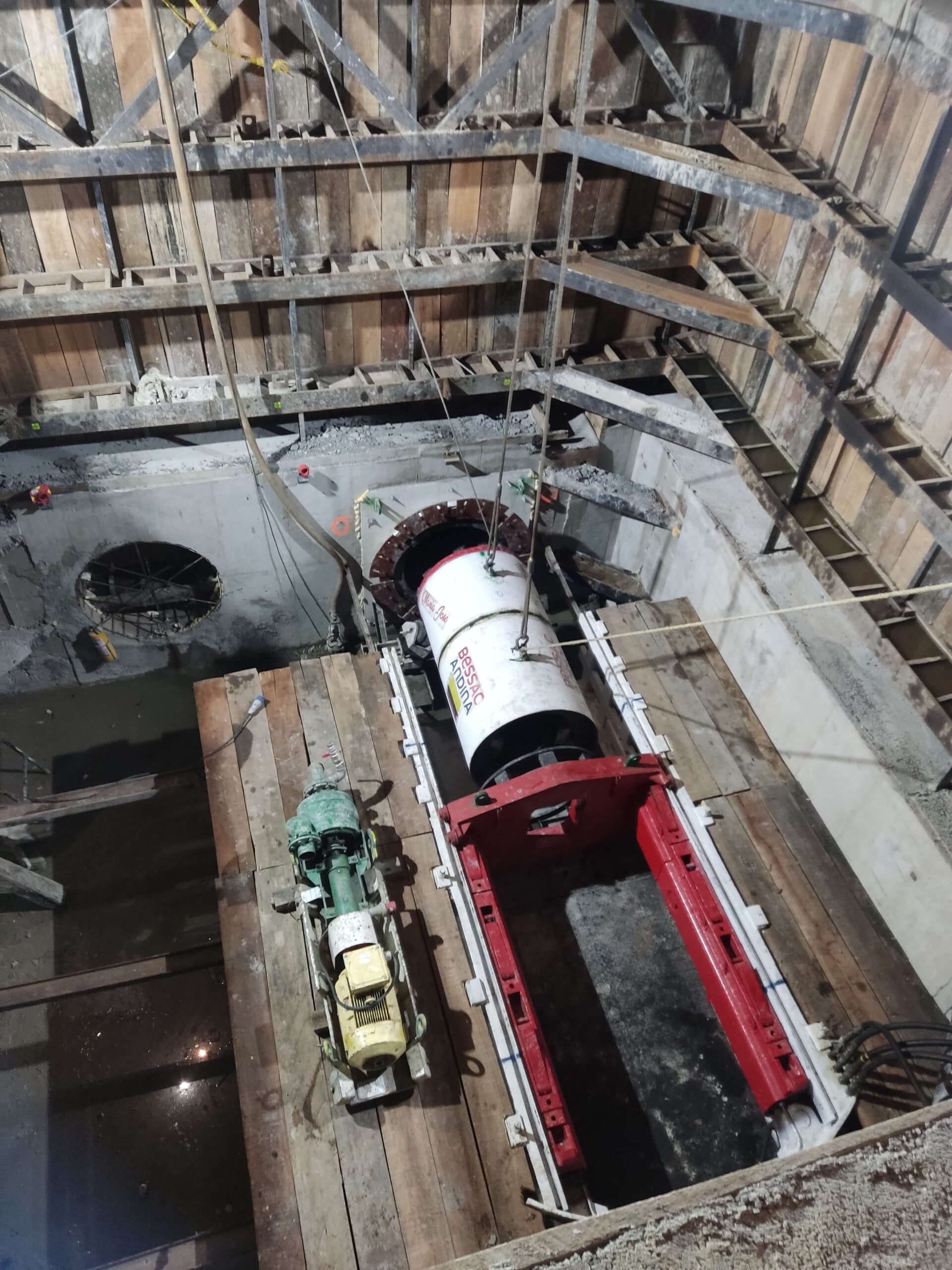February 14th, 2022
An intense year ahead in 2022 on the Rondeau interchange
Ten months after work began, the project to redevelop the Rondeau interchange in Grenoble will see a significant ramp-up over the course of 2022.
As a reminder, the project involves redesigning the traffic pattern of the main motorway interchange in the Grenoble area, between the A480 motorway (Lyon-Sisteron) and the RN87 national road (Grenoble-Chambéry). A 295m cut-and-cover – whose excavation was sheltered by diaphragm walls – will separate transit flows from local flows, improving traffic conditions for around 100,000 users each day.
Since April 2021, the teams of the consortium (comprising Campenon Bernard Centre-Est, Soletanche Bachy France, Soletanche Bachy Fondations Spéciales, VINCI Construction Terrassement, Eurovia and Sogea) have worked successively to achieve the first major milestones laid down by the client, the DREAL (regional environment directorate), i.e. the reopening of an exit ramp from the national road at the end of August and completion of the widening of a bridge (with four carriageways in each direction) across the national road on Cours de la Liberation.
At this stage, approximately 23% of the work has been completed in the areas made available and all business lines have already contributed, from development of work platforms over the national road to the construction of diaphragm walls, passive anchors, grout rafts, earthworks, civil engineering works, dry networks, sewerage collectors and the first surfacing work.
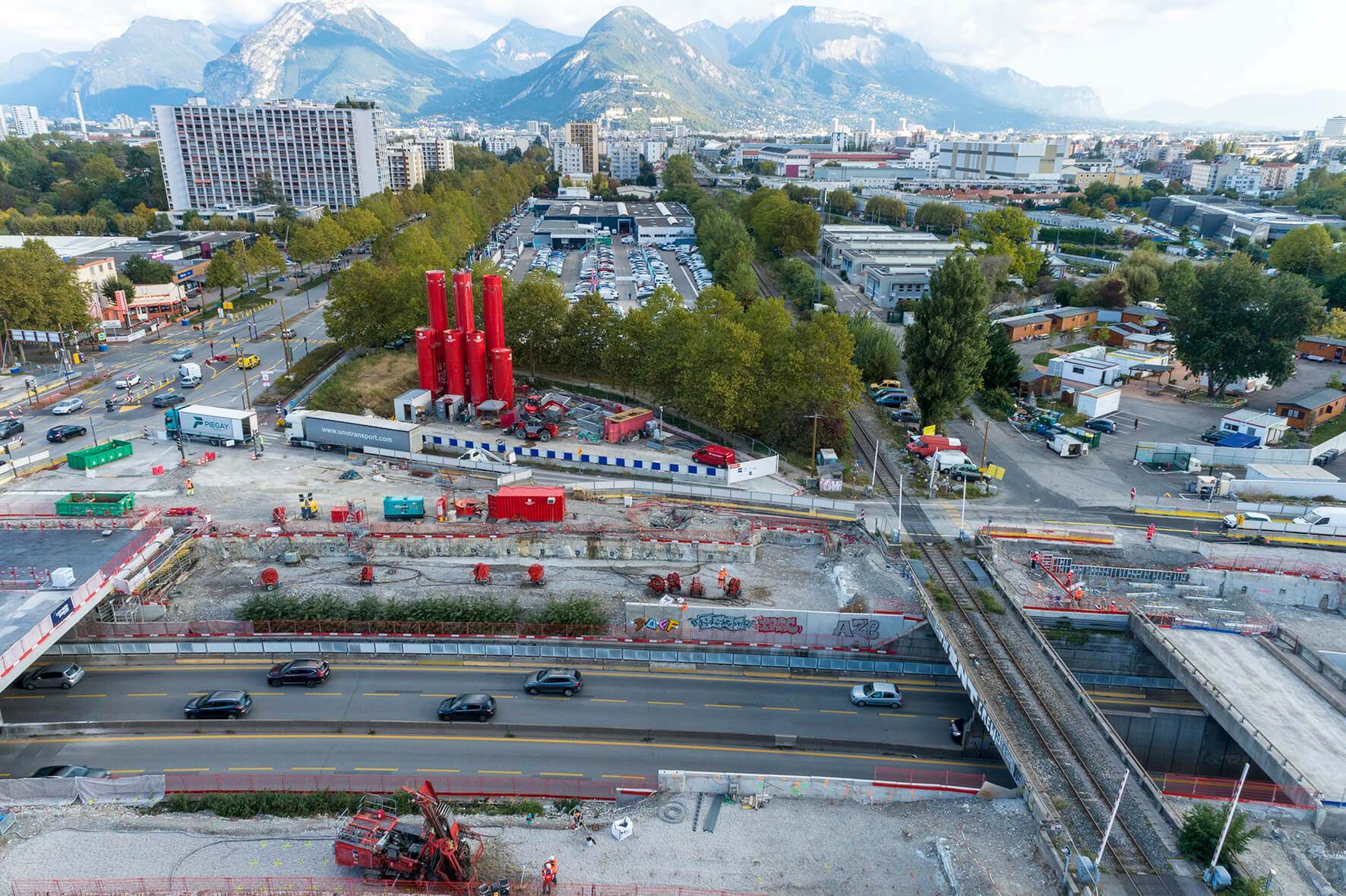
This work is conducted in strict phases, with each trade working successively on narrow worksites surrounded by active road and rail infrastructure. Meticulous phasing and the vigilance of all worksite participants are therefore essential to operate safety in this complex environment and so ensure that the project moves forward.
Concerning Soletanche Bachy’s activities more specifically, a diaphragm wall workshop was set up between June and October 2021, which excavated approximately 4,600 sq. m of walls (20% of the total). An excavation 500mm wide and to a depth of around 12m was carried out in compact sandy-gravel alluvium, using a KS hydraulic grab workshop.
Despite difficult drilling conditions (compact gravel and significant loss of fluid), concreting was carried out at a rate of approximately one pouring per day.
This was followed by a small-diameter drilling workshop from the start of August, with the installation of passive anchors (“bar” anchors, installed and sealed at 14m, sheltered from the Hi’Drill drilling operations), constituting the wall’s support level in the open-trench section of the project. The drilling work also included the construction of a 1.5m-thick grout raft in the very permeable gravel of the Drac. The grouting of bentonite-cement grout was carried out through sleeved tubes, using a container with eight computer-controlled grouting presses.
The SBFS teams meanwhile built four secant piles walls, supporting two new decks to widen the national-road bridge. The operation was repeated in December for the second half of the bridge, after moving traffic across to the completed half of the structure.
Although special works activity decreased in the autumn, while the route of the road project was adjusted, work has now resumed at a faster pace: two KS workshops have just been re-established to tackle the area of the cut-and-cover, representing the bulk of the volume of work (15,000 sq. m). Grout raft works will then be carried out, immediately followed by the earthworks and cover slabs.
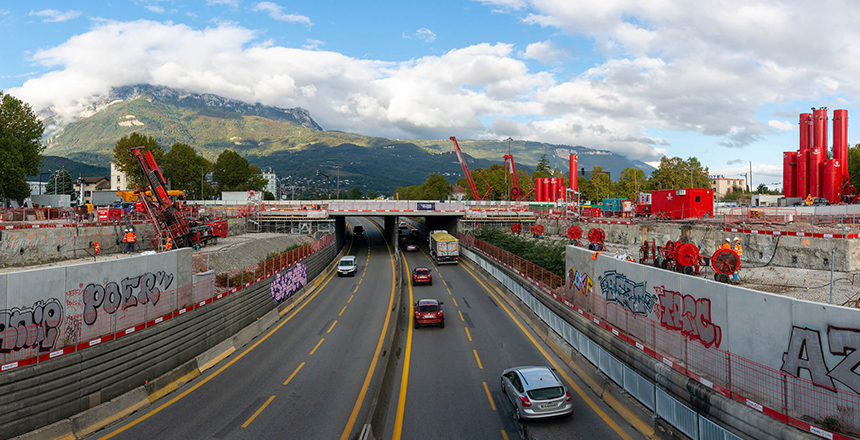
March and April will see the other highlight of the project, with the widening of a railway bridge through four “short and sharp” operations. This work, carried out for SNCF Réseau as part of a related contract, will require the removal and re-installation of the railway line crossing the national road over the course of four weekends.
Eight diaphragm wall panels are to be installed during the first three 52-hour outages, while the final 62-hour weekend will allow installation of the final decks, prefabricated on-site, using two 750-tonne cranes. About 40 company employees will be assigned to work during these timed weekend operations, in addition to the 40 or so already present during the week for ongoing work on the road contract.
See you the day after the Easter’s weekend when the first train is set to roll over the new structure!
